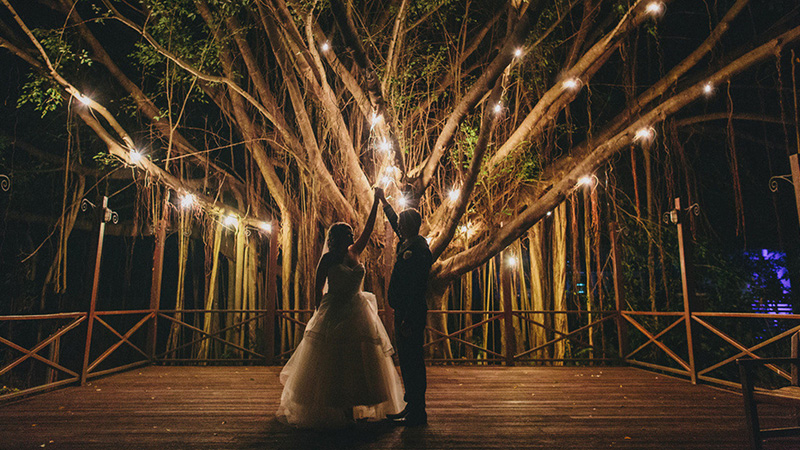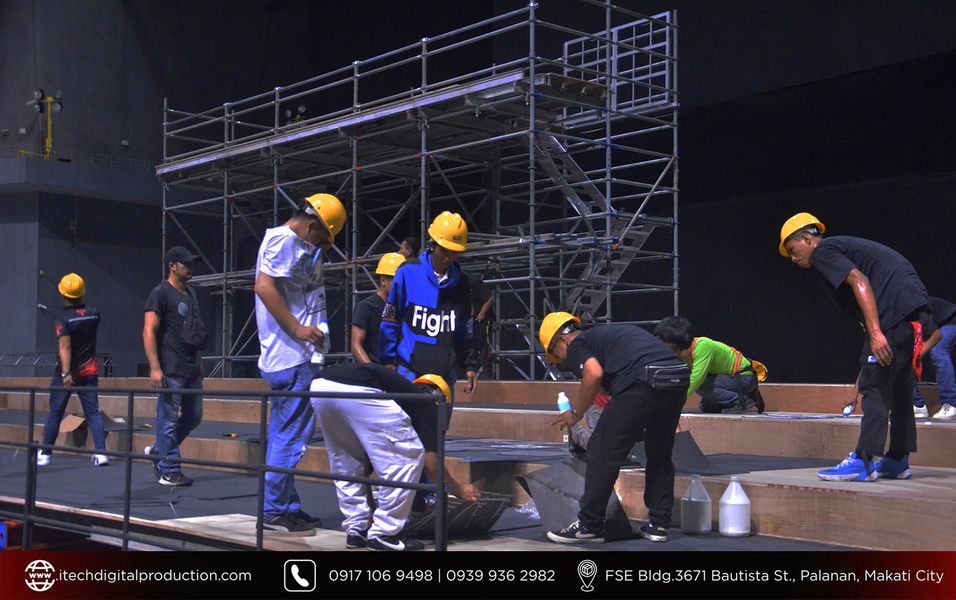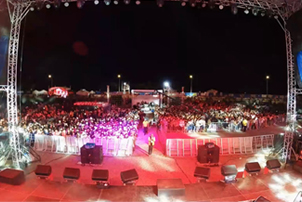Think lighting your Philippines wedding reception site means flipping on a light switch? If you want to turn your wedding venue from standard to simply stunning, you’ll probably need to take a more illuminating approach to your decor. “Lighting creates a mood,” says event designer Preston Bailey, and when it’s done well, lighting can make everything — including your wedding flowers, cake, and guests — look better. Here’s the right way to plan the lighting for your Philippines wedding.
Find Your Pro. Call Itech Digital Production Today
There are a couple ways to find your Philippines wedding lighting specialist. First, ask your event designer or wedding florist — many do their own lighting. If not, they may have a lighting pro they regularly work with. Or, the coordinator at your reception venue could probably recommend a lighting company that has worked with the site before — and ask to see pictures of the space transformed by various lighting arrangements. Don’t be surprised if your lighting designer has a background in theater — many experts are using the same technology and techniques in weddings that they honed creating dramatic sets for the stage.
Better yet, quit looking. Because Itech Digital Production can provide the best lighting for your Philippines Wedding! Call us today!
Assess Your Site
If you’re planning an evening reception, make sure to visit your site at least once when it’s dark outside. Look around the room and see where the fixed lighting is focused. Lights that illuminate the walls, windows, and ceiling can draw attention away from the center of the room — and you want to keep everyone’s eyes on the tables, dance floor, and each other. Ask if the site has dimmers for their overhead lights, and if there’s any florescent lighting at all, keep it turned off! Also, make sure there won’t be any service doors kept open, which could flood the space with light and ruin the effect.
If you’re hosting a wedding at home, discuss how much electricity your lighting designer is going to need. Your band or DJ will probably have to tap into your home’s power for their speakers, and you don’t want to risk blowing a fuse. If your lighting expert is concerned that there won’t be enough power to go around, they may consider bringing a generator, which should be kept well out of earshot.
Learn Lighting Lingo
Types of lighting commonly used at weddings
Pin spot A focused beam of light that shines directly onto an object, like a centerpiece or wedding cake, as a highlight effect.
Color wash There are a few different types of light fixtures that can create a “wash,” which is basically a blanket of colored light covering an entire area.
Gobos Circular stencils that are put over a light to project a design or pattern. Popular gobo designs are monograms, dates, or any other wedding motifs. The complexity of the design will affect the gobo’s cost — a simple stencil can be stamped out of steel, while a more intricate design must be laser etched out of stainless steel or a glass that can withstand high heat (costing much more than a stamped stencil).
Led Short for light-emitting diodes, LED lights are currently popular for weddings because they use much less electricity (and don’t get as hot) than regular, incandescent light bulbs. This means they can sometimes be wireless, so they’re even that much more discreet. LEDs are great for color changes and vibrant colors. They’re also common in strands and good for accent lighting.
Use Color
Think outside your wedding palette when you use colored lights. If you’ve used sage throughout your wedding, shy away from green lighting — it might be too much, and green isn’t always flattering. Opt for colors that complement all skin tones, like magenta or a soft rose.
Take advantage of the effect color can have on the atmosphere by changing the shades through the course of the night. For example, if your cocktail hour starts around sunset, you can splash your room with golden tones. During dinner, consider soft lighting that will mimic flickering candlelight. “As the party progresses, I would change the lighting to something a little bit more exciting,” Bailey says, “like strong oranges.” Making this transition is simple, with intelligent lighting (which can be programmed to coordinate the whole lighting setup). “With the push of a button, you can change the mood of the room,” Bailey says.
Set Up Outside
Lighting for an outdoor wedding can serve a lot of purposes. If your site has a path or steps that people will be using throughout the night, keep it lit with luminarias or paper lanterns so that no one trips.
Also consider making a bold statement with more unconventional lighting fixtures. Some lighting pros are using dramatic, sculptural lights like large orbs, or rows of vertical poles of light that look like pieces of modern art. Another idea is to fill your centerpieces with clear glass marbles as well as small battery-powered lights to give a fun, interesting glow to each arrangement.
Choose the Right Lights
The layout of your reception site can determine how you’re going to use lighting techniques. If dinner and dancing are happening in the same room, use a color wash to set the dance floor apart. If your reception site has sprawling ceilings, use pin spot lighting to keep the decor focused on certain details. And use a gobo light if you have a cute, recurring motif to help tie your reception together.
Work with your lighting designer to figure out which type of lighting fits your budget. All of your vendors (whose hard work will be well displayed) and your guests (who will all look great in flattering light) will be happy with the results, and you’ll be left with a reception space that’s bound to impress.





